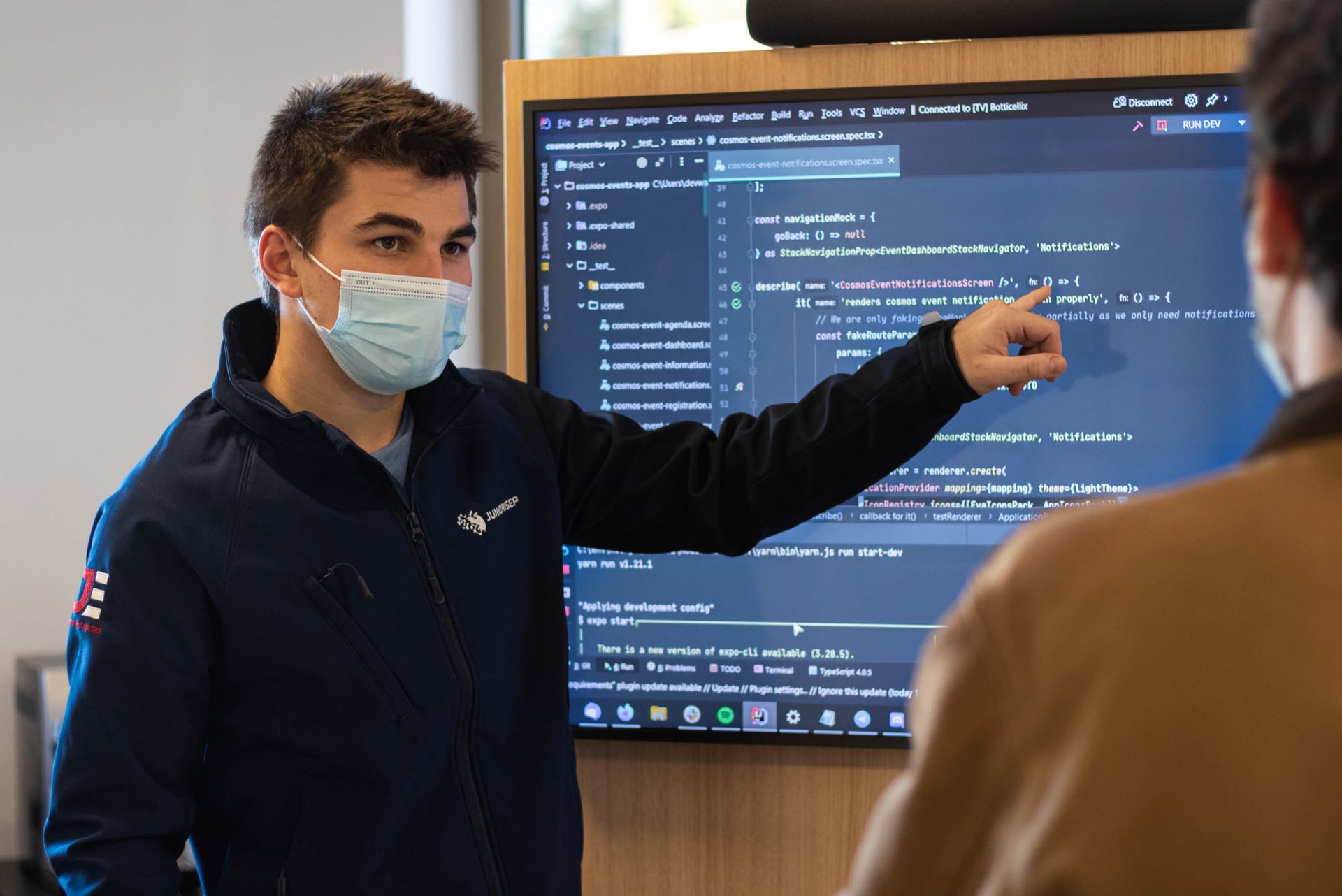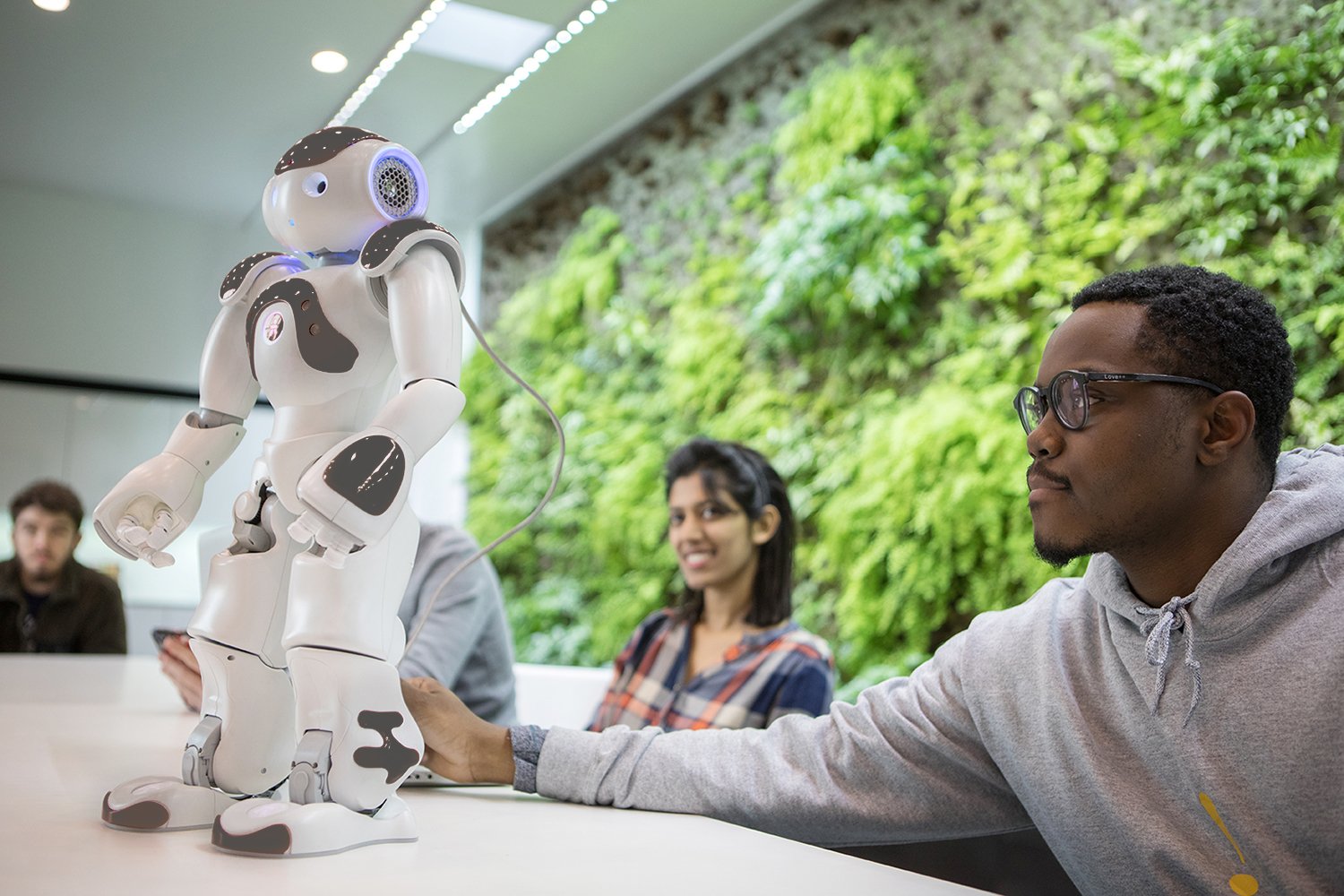RobotLAB Blog
Everything You Need To Know About Robotics in Businesses
How Will the Edtech Boom Transform the Existing Education System?
 Photo by Giovanni Gagliardi on Unsplash
Photo by Giovanni Gagliardi on Unsplash
The smartest edtech platforms are able to customize and identify the best learning pathway for each user.
- 0 Comments
- May 25, 2021 10:00:00 AM
- Posted by Natalia Galvis
- Topics: Math, EdTech, STEM, Curriculum, Problem Based Learning (PBL), teachers, students, Technology, PBL, Edchat, Gendergap, Digital Technology, Augmented Reality, teaching, online, virtual learning, lessons
5 Tips for Creating a Successful Math Intervention Initiative
 Photo by Antoine Dautry on Unsplash
Photo by Antoine Dautry on Unsplash
Encouraging staff collaboration and consistent monitoring can help your district build an effective math intervention program.
- 0 Comments
- May 24, 2021 10:00:00 AM
- Posted by Natalia Galvis
- Topics: Math, EdTech, STEM, Curriculum, Problem Based Learning (PBL), teachers, students, Technology, PBL, Edchat, Gendergap, Digital Technology, Augmented Reality, teaching, online, virtual learning, lessons
How to Get Educators Excited About Using EdTech
By Youki Terada
 Photo by Mr. Bochelly on Unsplash
Photo by Mr. Bochelly on Unsplash
The pandemic has taken a toll on all our institutions, and schools aren’t exempt. School leaders know that schools are closed, but teaching must go on, and; learning must go on.
Schools have moved to online learning. Educators are working from home, delivering classes to learners over the video, preparing lesson plans, collaborating with other educators, amongst many other tasks. Educators are working harder and longer, and many are exploring the edtech at their disposal. It is a big change that requires school leaders to manage their educators’ motivation to prevent loss in productivity and burn-out.
Here are a few strategies to make sure your educators remain motivated and online schooling continues smoothly.
- 0 Comments
- May 20, 2021 10:00:00 AM
- Posted by Natalia Galvis
- Topics: Math, EdTech, STEM, Curriculum, Problem Based Learning (PBL), teachers, students, Technology, PBL, Edchat, Gendergap, Digital Technology, Augmented Reality, teaching, online, virtual learning, lessons
How Hidden Classroom Dynamics Can Stymie Girls in STEM
By Youki Terada
 Photo by Jeswin Thomas on Unsplash
Photo by Jeswin Thomas on Unsplash
If we want to close the gender gap in science, we need to look at the invisible forces that shape classroom culture.
- 0 Comments
- May 19, 2021 10:00:00 AM
- Posted by Natalia Galvis
- Topics: Math, EdTech, STEM, Curriculum, Problem Based Learning (PBL), teachers, Drones, students, Technology, PBL, Edchat, Gendergap, Digital Technology, Augmented Reality, teaching, online, virtual learning, lessons
6 Ways to Introduce Students to App Development
By Devin Partida
Learning how to code your own apps can prepare you for a future career in software development. It also teaches students a lot about mathematics, logic, and the technology they encounter on a daily basis.
This is why a growing number of STEM educators are finding ways to teach students of all ages more about coding and computer science.
However, introducing STEM students to the basics of app development can be a daunting task — especially when students have little or no experience with computer science and mathematics.
Educators have developed these six techniques and projects as ways to introduce students to app and software development.
- 0 Comments
- May 17, 2021 10:00:00 AM
- Posted by Natalia Galvis
- Topics: Math, EdTech, STEM, Curriculum, Problem Based Learning (PBL), teachers, Drones, students, Technology, PBL, Edchat, Gendergap, Digital Technology, Augmented Reality, teaching, online, virtual learning, lessons
5 great things the pandemic revealed about schools
By Erin Werra
 Photo by Mustafa Omar on Unsplash
Photo by Mustafa Omar on Unsplash
After a rollercoaster year, schools are slowly reopening—and keeping with them some of the surprising positives that emerged from COVID.
- 0 Comments
- May 13, 2021 10:00:00 AM
- Posted by Natalia Galvis
- Topics: Math, EdTech, STEM, Curriculum, Problem Based Learning (PBL), teachers, Drones, students, Technology, PBL, Edchat, Gendergap, Digital Technology, Augmented Reality, teaching, online, virtual learning, lessons
Teaching a Love of STEM to Disabled and Neurodivergent Students
By Dan Matthews
 Image Source: Pexels
Image Source: Pexels
We live in an increasingly technologically enhanced society. As a result, science, technology, engineering, and math (STEM) subjects have become priorities in schools. However, it remains too often the case that these subjects are taught in public schools from a neurotypical perspective.
Many parents, teachers, and communities have found that school system administrators are not providing the flexibility, guidance, educational technology, and support for students experiencing disabilities or neurodivergent traits to thrive in STEM. This is not only frustrating and ethically unsound but can present significant hurdles to students who could discover a deep passion for these fields and become innovative contributors.
Let’s take a closer look at how educators can better imbue their neurodivergent and disabled students with a love of STEM.
- 0 Comments
- May 12, 2021 10:00:00 AM
- Posted by Natalia Galvis
- Topics: Math, EdTech, STEM, Curriculum, Problem Based Learning (PBL), teachers, Drones, students, Technology, PBL, Edchat, Gendergap, Digital Technology, Augmented Reality, teaching, online, virtual learning, lessons
How Online Learning can Improve Your Teaching
 Photo by Compare Fibre on Unsplash
Photo by Compare Fibre on Unsplash
- 0 Comments
- May 11, 2021 10:00:00 AM
- Posted by Natalia Galvis
- Topics: Math, EdTech, STEM, Curriculum, Problem Based Learning (PBL), teachers, Drones, students, Technology, PBL, Edchat, Gendergap, Digital Technology, Augmented Reality, teaching, online, virtual learning, lessons
The Power of STEM and Its Influence on Remote Learning

STEM has become one of the most used buzzwords in the K-12 education space. On the highest level, STEM stands for Science, Technology, Engineering, and Mathematics and refers to a curriculum where these four focuses are applied to all facets of a district or school’s curriculum.
- 0 Comments
- May 7, 2021 10:00:00 AM
- Posted by Natalia Galvis
- Topics: Math, EdTech, STEM, Curriculum, Problem Based Learning (PBL), teachers, Drones, students, Technology, PBL, Edchat, Gendergap, Digital Technology, Augmented Reality, teaching, online, virtual learning, lessons
Why AI is the future of Socratic learning methods
 Photo by Possessed Photography on Unsplash
Photo by Possessed Photography on Unsplash
AI plays a unique role in helping to facilitate engaging learning methods that teach students through experience and critical thinking.
- 0 Comments
- May 6, 2021 10:00:00 AM
- Posted by Natalia Galvis
- Topics: Math, EdTech, STEM, Curriculum, Problem Based Learning (PBL), teachers, Drones, students, Technology, PBL, Edchat, Gendergap, Digital Technology, Augmented Reality, teaching, online, virtual learning, lessons
Relevant Posts
- Augmented Reality: A Tool for Teaching Students Robot Programming
- Fostering Innovation Through Youth Education in STEM and EdTech
- How Parents Can Foster STEM Learning Beyond the Classroom
- How Robotics Cultivates a Deep Understanding of Mathematics in Students
- RobotLAB Receives EDTech Chronicle 2023 ‘BESTIE’ Award for Landmark Partnership with American Samoa Dept. of Education.
Subscribe to Email Updates
-
I Want To Learn MoreADDITIONAL INFORMATION

